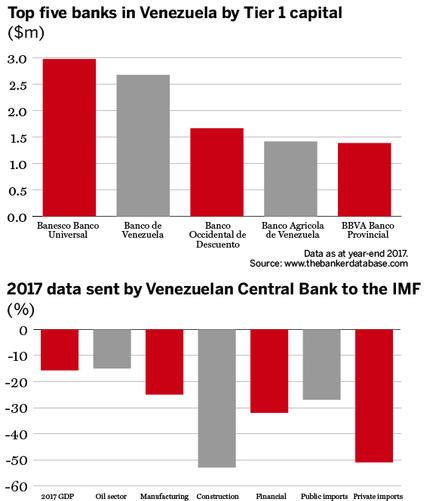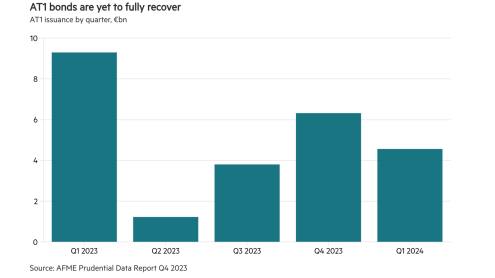In November last year, for the first time in two years, Venezuela’s central bank sent key economic data for 2017 to the International Monetary fund (IMF). Though the official inflation figure of 860% over the course of 2017 is high, it is dwarfed by the IMF’s own estimate of 2818%. Venezuela’s GDP shrank by 15.7% in 2017, according to the figures. The IMF projects the economy will shrink further in 2019, adding up to a decline of more than 50% in GDP since 2013.
With inflation so out of control, it is difficult to draw meaningful conclusions about the banking system. The story differs wildly depending on perspective: exponential growth in terms of local currency and exponential decline in terms of hard currency. Certainly in US dollars, banking institutions have shrunk to a fraction of their former size. The Banker data shows a particularly steep drop in all metrics over 2017. For reference, the top five banks combined reported $8.93m in Tier 1 capital at the end of 2017. The previous year, Banco de Venezuela alone reported Tier 1 capital of $15.4m, just shy of the $16.02m reported by all the country’s 31 banks combined in 2017. The story is similar across the board: Banesco reported a collapse to $2.98m in 2017 from $12m in 2016.
However, looking at Banesco’s financial report for the second half of 2017, its assets in bolivares grew an enormous 1332% to 30,788bn bolivares from 2150bn bolivares at the end of 2016. It reported a mind-blowing 115.3% return on equity in terms of local currency. Unfortunately, the incredible gains are more than wiped out by inflation figures nearing 3000%. The report does not mention inflation, nor does it report any figures or ratios in hard currency.
While the domestic figures may look good at first glance, they will not help local banks maintain financial health in the long term. This is not the first hyperinflation scenario in the region: banks in Peru and Brazil have weathered currency storms before. But what makes the situation more dire in Venezuela are its stringent currency control rules, which render it impossible for banks to use hard currency operations to stay afloat. Sitting president Nícolas Maduro has reportedly started to relax some of Venezuela’s stringent price and foreign exchange controls to stimulate the economy, but it may be too little too late. The political situation remains volatile, but a change in regime is no guarantee that the economic situation would improve. Whichever way the political pendulum swings, the road to equilibrium will be long and hard.












